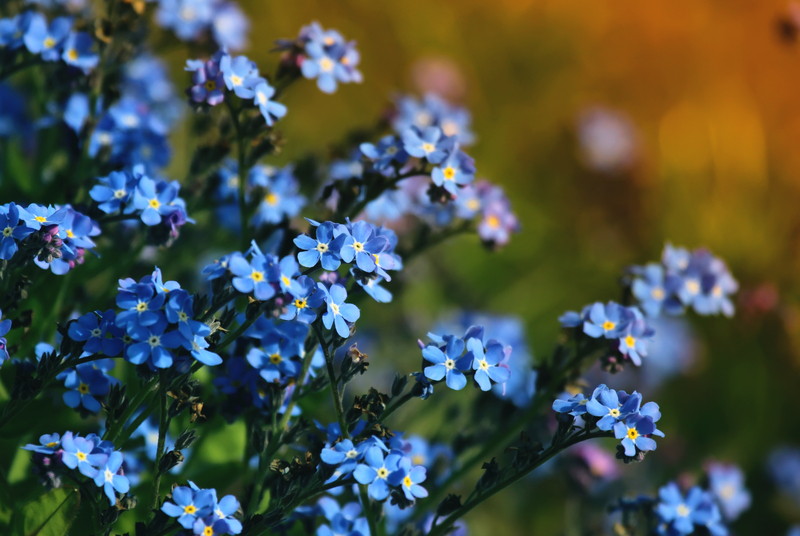From Brown to Brilliant: Steps to a Standout Lawn for Newbies
Are you tired of gazing at your patchy, brown yard and dreaming of a lush, green oasis? If you're searching for steps to a standout lawn for newbies, you're in the right place! Creating a vibrant, healthy lawn can seem overwhelming, especially if you've never done it before. But with a little knowledge and some TLC, even complete beginners can transform their outdoor space from dull and dry to green and gorgeous.
Understanding Your Lawn's Current Condition
Before you grab your rake or bags of fertilizer, it's crucial to assess your current lawn health. Every standout lawn starts with a clear understanding of what you're working with.
Spot Checks and Soil Testing
- Visual Assessment: Walk around your lawn. Take note of bare spots, weeds, and persistent brown areas. Are there areas that receive heavy foot traffic? Is the discoloration consistent or patchy?
- Soil Testing: Healthy grass starts with balanced soil. Inexpensive soil test kits are widely available. Testing helps determine pH levels and the presence of essential nutrients like nitrogen, phosphorus, and potassium. Your soil type (sandy, clay, loamy) will also affect your approach.
Key takeaway: Don't skip soil testing! It takes minutes but prevents months of frustration for beginners.

Choosing the Right Grass and Time to Seed
Not all grass is created equal. The type you choose dramatically affects your lawn's chance of becoming green and lush. Picking the right seed is a crucial newbie lawn care step.
Grass Types 101
- Cool-Season Grasses: Best for northern climates--think Kentucky bluegrass, fescue, and ryegrass. They thrive in the spring and fall.
- Warm-Season Grasses: Suited for southern areas--such as Bermuda, zoysia, and St. Augustine. These varieties flourish during summer heat.
Pro Tip: Speak to a local garden center expert to match the right seed with your region and yard conditions.
Ideal Seeding Seasons
- Cool-Season Lawns: Early fall or early spring are best windows to seed for fast growth.
- Warm-Season Lawns: Late spring to early summer, when soil temperatures reach around 65?F.
Lawn Preparation: The Secret to Success
Proper preparation sets the foundation for a brilliant lawn transformation. Good prep fixes soil and drainage issues, giving your grass seed its best chance.
Steps for Prepping Your Yard
- Clear Debris: Remove leaves, sticks, weeds, and stones. If weeds are aggressive, consider a weed-killer treatment, ideally two to three weeks before seeding.
- Aerate the Soil: Use a lawn aerator to relieve compacted soil, improving water and nutrient penetration.
- Enrich with Nutrients: Based on your soil test, add lime (to raise pH), sulfur (to lower pH), or compost to enrich poor soil.
- Rake and Level: Use a hard rake to break up clumps and level out your yard, ensuring seeds won't wash away in rain.
Seeding or Sodding: Which Is Best for New Lawns?
Now it's time for action! The main two methods for creating a new, green lawn are seeding and sodding. Each has pros and cons for beginners.
Grass Seeding
- Budget-friendly
- Takes longer to establish
- Wider choice of grass types and blends
Sod Installation
- Instant green lawn
- More expensive
- Requires lots of initial water and attention
- Limited to what is grown and available locally
If cost is a concern or you prefer a gradual transformation, seeding is ideal for lawn care newbies. For those seeking instant curb appeal, sod may be worth the investment.
Watering Wisdom: Keep Your Grass Green
Consistent watering is often the difference between brown, patchy grass and a stunning, standout lawn.
Watering New Seed
- Water lightly several times a day until seeds germinate (usually two to three weeks)
- Don't flood! Seeds can rot when overwatered
Watering Established Lawns
- Deeply water once or twice weekly (rather than daily, shallow watering)
- Early morning is best to avoid disease and evaporative loss
- Use a rain gauge or small container to check you've delivered 1-1.5 inches per week
Watch for: Signs of underwatering (grass turns bluish-gray, footprints remain) and overwatering (mushrooms, puddling, thatch growth).
Fertilizing for a Brilliant Lawn
Fertilizer is the food that helps lawns transition from brown to lush. But newbie mistakes abound--over-fertilizing can burn your lawn, while too little does nothing.
What Kind and When?
- Starter fertilizer: For new lawns, look for high-phosphorus blends (the middle number on the bag) to encourage strong roots. Examples: 10-20-10 or 18-24-12.
- Established lawns: Use a balanced "lawn food" during the growing season. Slow-release fertilizers are easier for beginners to manage.
Application Tips
- Apply evenly using a broadcast spreader
- Water after fertilizing (unless rainfall is imminent)
- Avoid fertilizing during summer heat; early fall and spring are ideal
Tackling Common Lawn Pests and Weeds
Even the best-loved lawns can fall victim to weeds, pests, and diseases. Early detection and the right approach are vital for durable, year-round color.
Basic Weed Control
- Hand-pull weeds before they seed
- Apply pre-emergent weed killer in early spring and late summer
- Use post-emergent herbicides only on visible trouble spots
Pest Patrol
- Watch for brown patches spreading despite watering (could indicate grubs or chinch bugs)
- Encourage beneficial insects and healthy soil with compost and mulching
- If using pesticides, always follow label directions and spot-treat to preserve pollinators
Essential Mowing Tips for Lawn Newbies
Proper mowing isn't just cosmetic--it's the secret ingredient in standout lawn care. The right technique encourages thick, lush growth and keeps weeds at bay.
Newbie Mowing Rules
- Don't scalp: Never cut more than 1/3 of your grass's height at a time
- Keep blades sharp to avoid tearing grass
- Vary your mowing direction weekly to prevent ruts and encourage upright growth
- Return clippings to the lawn ("grasscycling") to naturally fertilize
- For new seed--wait until it's at least 3 inches tall and the soil is firm before mowing
Fun fact: Taller grass shades the soil, preventing weed seeds from sprouting and keeping moisture in!
Overseeding and Aeration: Next-Level Lawn Care
Once you've mastered the basics, annual overseeding and aeration will keep your lawn in peak condition.
Why Aerate?
Compacted soil suffocates roots. Aerating (removing small plugs of earth) lets in oxygen and nutrients, resulting in robust growth and fewer bare spots.
Overseeding
Spread new seed over your current lawn each fall or early spring. This fills in thin areas, crowds out weeds, and ensures a consistently green color.
Seasonal Lawn Care Calendar for Beginners
Grass care is a year-round job, but each season has unique requirements. Here's a quick seasonal roadmap for standout lawn care:
- Spring: Rake debris, aerate, overseed, apply pre-emergent weed control, and fertilize as needed
- Summer: Adjust watering for heat, mow at a higher setting, spot-treat weeds and pests
- Fall: Top-dress with compost, overseed, fertilize, aerate again for cool-season lawns
- Winter: Avoid walking on the grass when frozen, clear heavy snow or debris

Frequently Asked Questions: Turning Your Brown Lawn Brilliant
How long does it take to see real results?
With diligent care, you can expect noticeable improvement within 3-6 weeks of seeding and fertilizing. Full transformation may take one full season or more.
Do I need to hire professionals?
Not at all! Most standout lawn care steps are entirely DIY-friendly. Only hire a pro for major grading, drainage issues, or serious pest infestations.
Why do I still have brown patches?
If you water, seed, and fertilize diligently but still see brown areas, consider:
- Pet urine or chemical spills
- Dense shade--switch to shade-tolerant grass blends or add mulch beds
- Persistent pests or a fungal issue (consult your local extension office)
Final Words: From Brown to Brilliant--Your Lawn's New Beginning
Creating a standout lawn as a newbie might sound difficult, but remember: Every green, dazzling yard you admire was once brown, thin, or full of weeds. By following simple, proven strategies--testing soil, choosing the right grass, prepping the yard, and sticking to a basic maintenance schedule--you'll soon be proud of your outdoor space.
The key to lawn transformation for beginners is patience, consistency, and a willingness to learn from mistakes. With these steps, you'll transition from brown to brilliant, season by season, turning your lawn into the envy of the neighborhood!
- Test your soil
- Choose the right seed
- Prepare thoroughly
- Water properly
- Feed and mow with care
Ready to start your journey to a brilliant, standout lawn? Begin today--and enjoy your new green paradise sooner than you think!
```